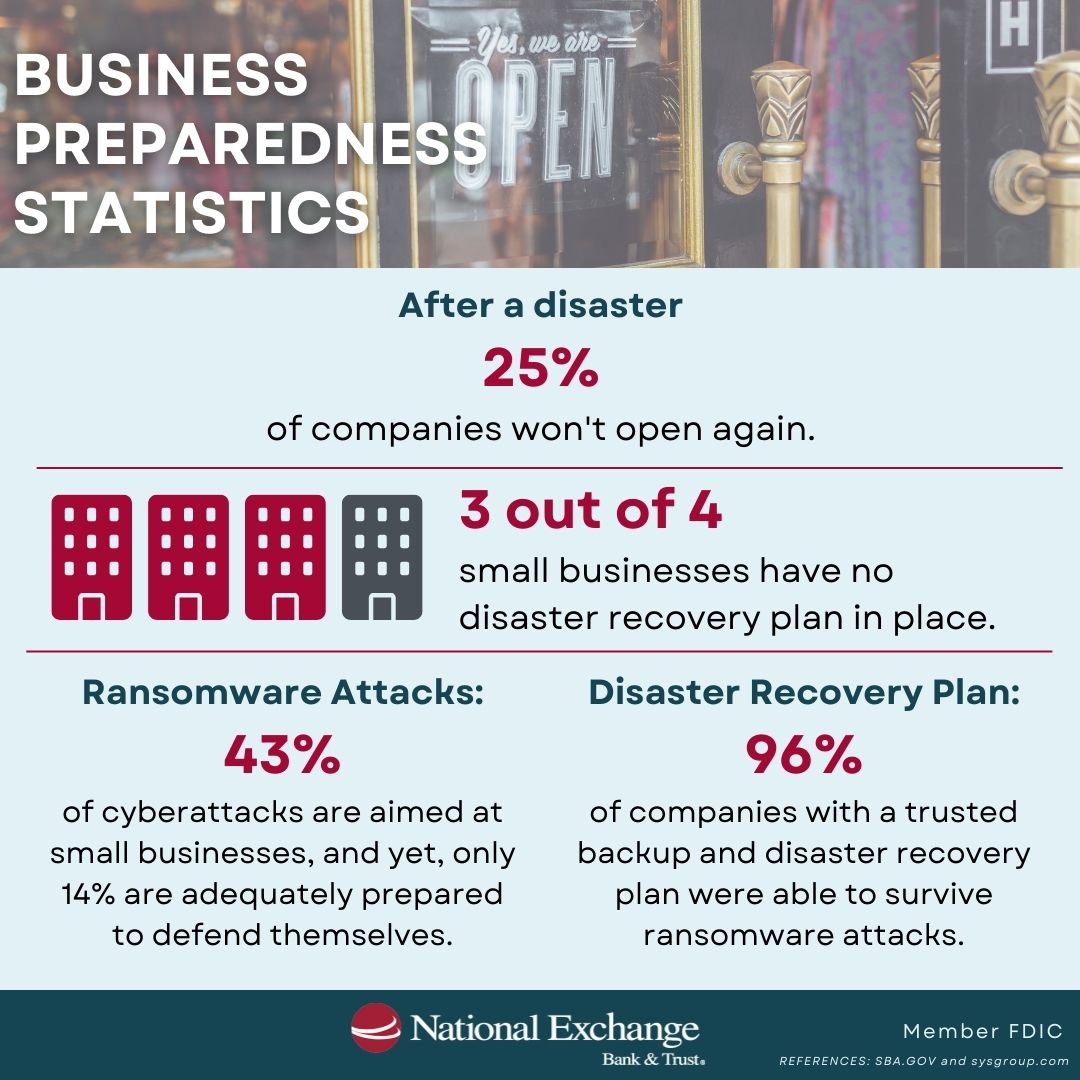Create a Company Emergency Preparedness Plan in 3 Easy Steps
Cyberattacks, along with other emergencies such as natural disasters, health hazards, and human-caused hazards can strike at any time. Consider how these emergencies could affect your business, employees, and consumers. Is your business prepared to address emergency situations and weather the storm?
Developing a company emergency preparedness plan can help businesses better prepare for risks and continue business operations afterwards. National Exchange Bank & Trust cares about your business which is why we have created an emergency preparedness checklist for businesses and outlined the steps to start preparing a plan.

Step 1: Identify Possible Risks and Resources
The first step to prepare a company emergency preparedness plan is to research possible hazards and identify resources available.
- Know what type of natural disasters are most likely to impact your business.
- Learn how previous emergencies impacted businesses in your area.
- Be aware of recent fraud threats and cyber attacks, along with business fraud mitigation and resources.
- Consult with your insurance agent to know what coverage is available and what the policy covers.
- Identify external resources to know who you can contact in an emergency and what they can provide such as local law enforcement, fire departments, utility companies, neighboring businesses, emergency repair and cleaning services, and IT support.
Step 2: Prepare an Emergency Preparedness Plan for Your Business
-
When preparing your company emergency preparedness plan, make sure it protects your business before, during and after an emergency.
-
Determine what safety equipment is needed and show employees how to access and use it.
-
Ensure your operating systems, software, and apps are up-to-date.
- Require strong passwords to protect vital information.
-
Establish evacuation routes for your facility with considerations for people with disabilities and medical conditions.
-
Have a system for warning employees and local emergency officials during an emergency.
-
Identify a plan to keep your business operating as it responds and recovers from a critical situation such as which essential functions to carry out first and the staff to perform them, where to conduct business if the facility is not accessible, and which records and documents need to be readily accessible to perform essential tasks and backup systems to safely store and retrieve them.
Step 3: Integrate Business Preparedness into Normal Business Operations
-
Educate employees so they know their role during an emergency, procedures for warning and communication, and evacuation or shelter protocols.
-
Conduct emergency drills to assess the readiness of your facility and staff.
-
Offer and/or encourage personal preparedness among employees.
-
Help your community prepare for disasters by hosting blood drives and contributing supplies and services to emergency response efforts.
This emergency checklist for business leaders can help jumpstart creating your company emergency response plan. Having a detailed plan in place can minimize impacts of critical situations and help you continue business operations.
Looking for more emergency toolkits and guidance? Ready.gov has resources available.
For information about financial assistance options after a disaster, contact a business loan lender at NEBAT.
Find a NEBAT business lender near you
*Source: sba.gov/blog/2023/2023-09/cyber-safety-tips-small-business-owners
